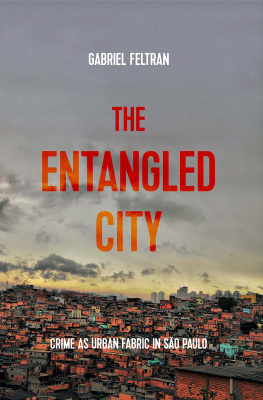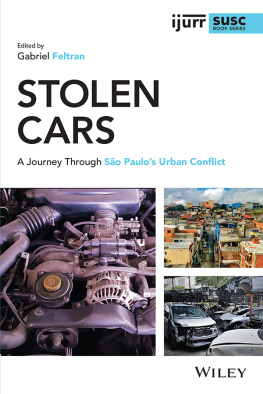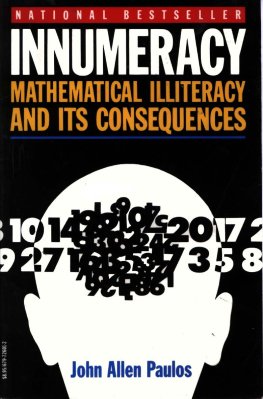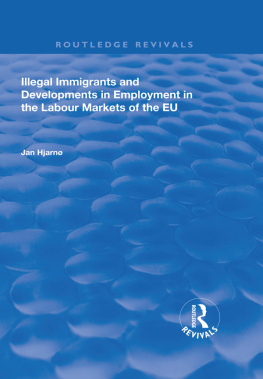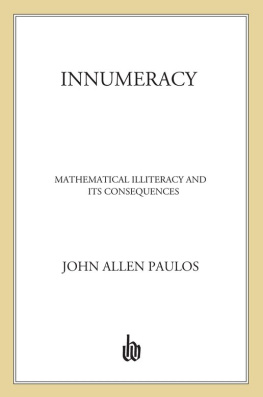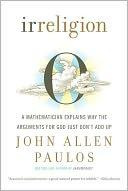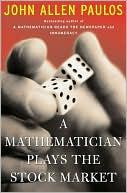Copyright Gabriel Feltran 2020
The right of Gabriel Feltran to be identified as the author of this work has been asserted by him in accordance with the Copyright, Designs and Patents Act 1988.
Published by Manchester University Press
Altrincham Street, Manchester M1 7JA
www.manchesteruniversitypress.co.uk
British Library Cataloguing-in-Publication Data
A catalogue record for this book is available from the British Library
ISBN 978 1 5261 3824 8 hardback
First published 2020
The publisher has no responsibility for the persistence or accuracy of URLs for any external or third-party internet websites referred to in this book, and does not guarantee that any content on such websites is, or will remain, accurate or appropriate.
COVER IMAGE: Favela Paraisopolis, Sao Paulo, Brazil, October 2011. Photo by Roberto Rocco
Typeset by Servis Filmsetting Ltd, Stockport, Cheshire
For Deb, Iai and LoWe are not outlaws, cause the law we make by ourselves. (M.C. Orelha, Faixa de Gaza (Gaza Strip), a forbidden Funk, Rio de Janeiro, 2009)
The most important deliberative bodies in So Paulos contemporary body of crime have a funny name: sintonias. Like so much else involving the Primeiro Comando do Capital (PCC), the term is odd, unexpected, opaque. If we want to understand it, we need to move from the inside out.
Since its origins in a high-security prison in the early 1990s, the PCC has grown from a tight group of prisoners determined to curb carceral abuse and fratricidal violence to a transnational brotherhood responsible for the normative regulation of neighbourhoods and economies, from the organisations native So Paulo to the peripheries of cities throughout Brazil and points of criminal economic activity across the globe. A good part of that rise, Gabriel Feltran argues, can be explained by the PCCs radically decentralised, anti-hierarchical and deliberative structure. No leader defines the PCC, and its ultimate aim is not to profit, but rather to create the conditions through which its brothers in crime might do so to foment peace, justice liberty, equality and union among thieves. Those conditions are not commanded from high by a powerful mastermind, but created in practice through deliberation within cell-like groupings of brothers who earn their status through action and should never be held above the collective notion of what is right and tolerable in the world of crime. Each of those independent nuclei, functioning without full knowledge of one another or even of the PCCs operational map, is called a sintonia. When I recently had the chance to talk with Gabriel Feltran about his extraordinary research on the PCC, it occurred to me to ask: why?
The word could be rendered in English as synchronicity or harmony. But Feltran honed in instead on the evocative power of concrete mechanics. Sintonias most powerful definition, he told me, is tuning. It denotes that magical moment when ones clumsy fiddling with an old-fashioned radio dial or television antennae yields clear reception; the wavelengths are synchronised, the sound is plain. Those men in the Taubat prison who founded the PCC in the 1990s for the most part children of Brazils poor peripheries in the economically disastrous 1980s had probably messed with their share of rickety televisions and radios. They knew the intricate, tactile delicacy required for every successful tuning. And thus their deliberative bodies became sintonias, those intangible spaces where the clash of static becomes lucid sound.
In translating portions of Feltrans remarkable Irmos: Uma histria do PCC (2018), Entangled City illuminates the logic of the PCCs sintonias, allowing English-language readers to peer beyond the veil of bravado and drama that renders the rise of Brazils criminal organisations as an exotic triumph of uncontrolled violence, straight out of City of God. But Entangled City is not a straight translation. It is, instead, a synthesis of Feltrans quarter century of intensive ethnographic research in So Paulos vast peripheries, a crystallisation of forms of understanding that have emerged through the granular accumulation of everyday experiences: bus rides through dusty self-built neighbourhoods in which bodies, houses and commercial outposts gradually incorporate the trappings of global consumerism; everyday conversations in cramped homes where a crack addict and drug dealer is also a son taking a shower; decades of confessional tte--ttes with a single mother whose past of domestic abuse and family subsistence on fish-head gruel gradually becomes a present in which material stability and community integration coexist with wrenchingly violent loss. In juxtaposing these histories of granular everyday transformation with the parallel evolution of academic, political and media discussions of democracy, citizenship, urban violence, and crime, Feltran achieves a sintonia of his own, opening a space of clarity where strangers can apprehend the synchronicities and dissonances that order and disorder the urban world as it is experienced from the peripheries.
Gabriel Feltran began publishing his research about So Paulo in the early 2000s. In three major monographs, several edited volumes, and dozens of articles, book chapters and works of public scholarship, he has worked as both a translator and an intellectual, illuminating for outsiders dynamics that are so obvious as to seem banal to residents of So Paulos periphery, but also shedding brilliant light on the significance of those dynamics within broader historical, urban, economic and cultural contexts. Feltran has written about peripheral social movements and regulatory regimes, about the music of crime and young peoples encounters with the state and the law, about the structure of illegal economies and the dynamics of urban violence. These projects are layered, not linear, each building on intensive immersion in So Paulos southeast periphery but focused on the threads of connection that link those peripheral cityscapes to economies, structures of governance, conceptual aesthetics and moral logics to greater So Paulo, greater Brazil, and alternate urban and civic orders stretching from Paraguay to Berlin. This book assembles fragments of all of those projects, but it is more fusion than collage, an extended meditation on the meaning that all of those disparate strands take on when they are entangled in our own historical moment, and apprehended from disparate and distant global contexts.
In that spirit, one conceptual and argumentative thread from The Entangled City stands in especially sharp relief. It emerges from the deceptively simple notion that specific stories shape the worldviews of peripheral urbanites. In theoretical terms, Feltrans commitment harkens back to multiple sociological and ethnographic traditions, and especially to those inspired by the theory of action, as expressed in the notion that the social is structured through everyday life and it is in pragmatic action that the plausible is constituted (p. 31); the everyday plays a decisive role in the objectification of the categories of difference (p. 41). Feltrans ethnographic method is built on the notion that the peripherys multiple and shifting realities can only be understood through the accrual of experience. The peripheral world he portrays is one in which it makes no sense to think through important questions in the absence of specific narratives real people, real things, real and infinitely varied interactions. It is more meaningful to say that Bianca has a new refrigerator than it is to say that more money is circulating (p. 7); you convey far more by describing the deaths of actual people Fernando, Ansio than you do by analysing the causes and meaning of urban violence. And the emphasis on narrative is a moral logic as well as a discursive technique; one of the reasons that the PCCs justice enjoys broad legitimacy is that it is based on the interplay of moral principle and situational nuance, told by the actors themselves and debated by brothers with little patience for abstraction or technicality. This is justice based on principles put to the test on a situational basis (p. 221), not on an opaque and impenetrable legal infrastructure thats actions regularly belie its theoretical commitments.

